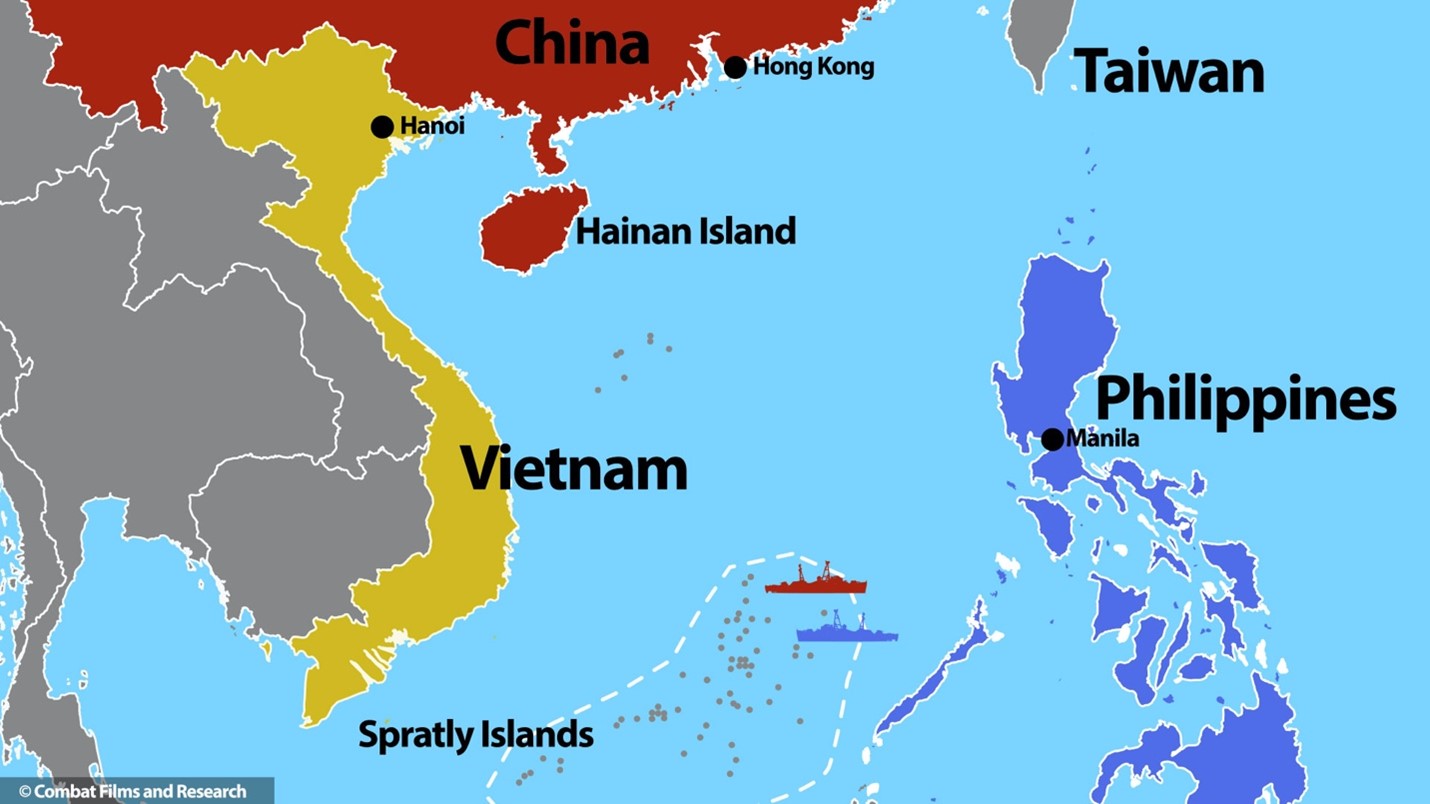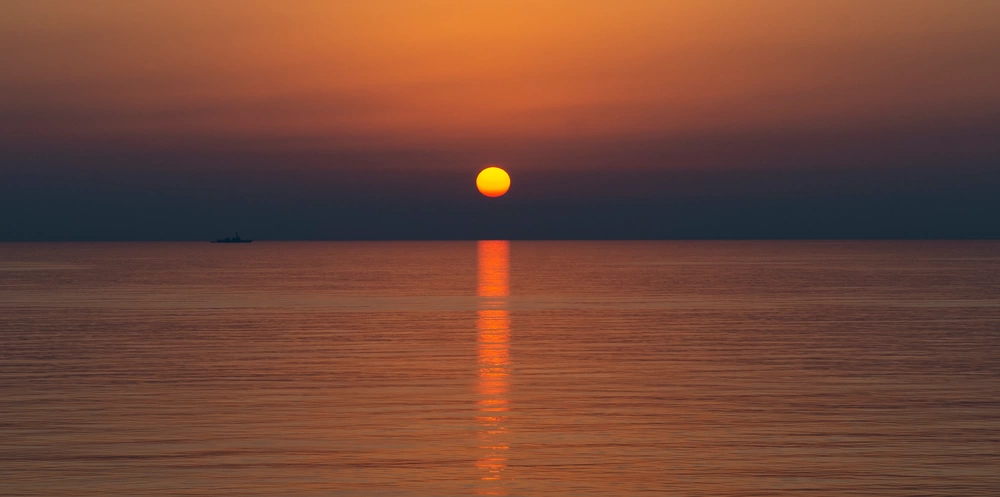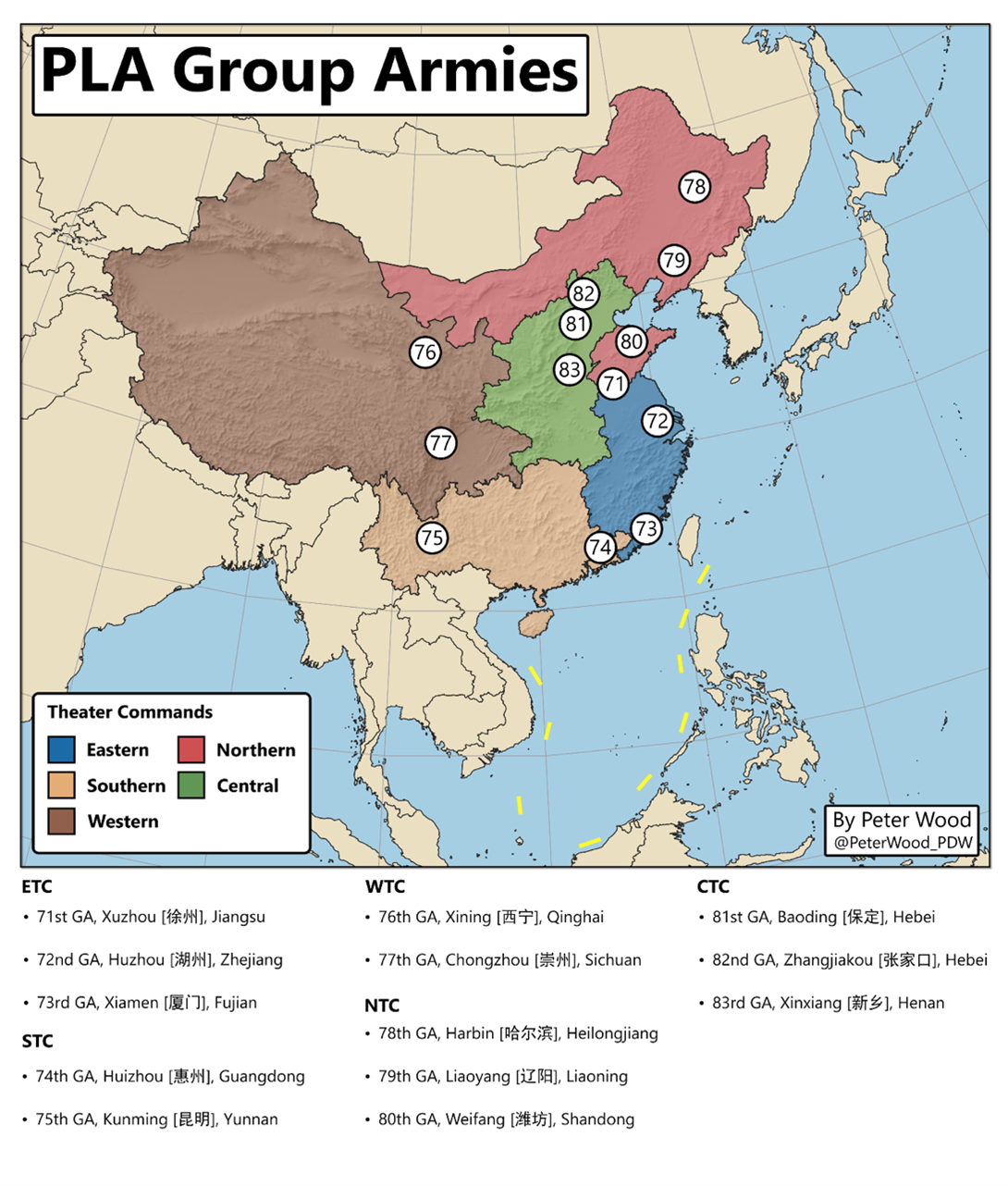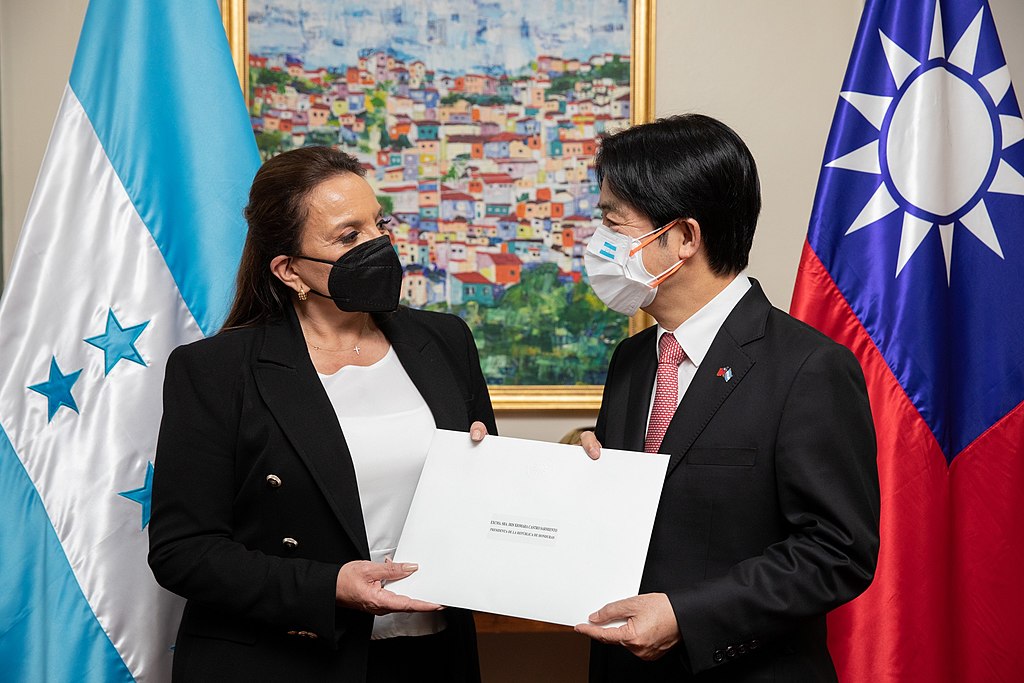
The hospital ship USNS Mercy (T-AH 19), top, and the People’s Liberation Army Navy hospital ship Peace Ark (T-AH 866) transit the Pacific Ocean July 22, 2014, during Rim of the Pacific (RIMPAC) in 2014.
“Recently, a practical medical service drill organized by the 961st Hospital of the Joint Logistics Support Force was launched at a field comprehensive training ground.”
Beijing’s ability to successfully treat wounded soldiers and sailors would likely be a factor when deciding to enter into most conflicts. A People’s Liberation Army (PLA) source has stated that China could expect 120,000 casualties in an amphibious invasion of Taiwan. Even such a large projected number of casualties is unlikely to deter the PLA from entering into a conflict when it involves the core issue of Taiwan. As such, the PLA is showing a focus on care for the wounded. Authoritative PLA publications provide detailed information on planned battlefield medical support and evacuation of wounded from the company level back to field hospitals and fixed PLA hospitals.[i]
The 961st Hospital of the Shenyang Joint Logistic Support Center in the Northern Theater Command recently held a battlefield medical drill, according to the first excerpted article from the official PRC military newspaper PLA Daily. Casualties were reported at a frontline unit and a field medical team sent a triage team forward. The triage team used a drone to locate three soldiers with minor injuries and a seriously wounded soldier. Three nurses were sent to the slightly wounded troops, and a doctor, nurse, health worker, and driver were sent to evacuate the seriously injured soldier. The seriously wounded soldier was transported to a field medical aid post, likely at battalion or brigade level, where a serious injury treatment team provided a blood transfusion. The team matched and drew blood for transfusion to the injured at the site when the on-hand supply was depleted.
The second excerpted PLA article, published on the Ministry of Defense website, described the Naval Medical University providing training for maritime medical support. The university sent a medical team to a naval unit in the Eastern Theater Command to research maritime medical support requirements and explore new support methods. The team submitted a report to the university proposing solutions. The university report recommended to regularize sending teams to fleets, increase training, and more timely medical support and delivery of medicines. The university strengthened its links with surface ships, submarines, and naval aviation units to track medical requirements and improve military medical education.
The PLA is serious about treating and evacuating sick and wounded personnel from the battlefield as well as providing maritime medical support.[ii] The PLA is also incorporating unmanned aerial vehicles into medical units to locate wounded on the battlefield. PLA medical universities are working with Naval and tactical units to determine requirements and problem areas in medical support to find solutions. Naval medical support is a key area where the PLA publication cited above notes weaknesses in medical treatment at sea.
Sources:
“联勤保障部队第961医院组织实战化卫勤演练 (The 961st Hospital of the Joint Logistics Support Force Organizes a Practical Medical Service Drill),” PLA Daily (Official PRC Military Newspaper), 22 May 2023. http://www.81.cn/szb_223187/szbxq/index.html?paperName=jfjb&paperDate=2023-05-22&paperNumber=02&articleid=906347
“Saving lives is the core task of the field medical team, “Zhu Siqiang told reporters. During the peacekeeping mission, he encountered multiple times when a blood bank was in urgent need. In such a crisis, on-site blood sampling and emergency treatment were used to save the lives of his comrades. In this drill, they set up a training program for difficult and dangerous situations, which is to strengthen the battlefield awareness and emergency response ability of officers and soldiers and ensure that medical personnel can go, be saved, and be cured at critical moments.
“海军军医大学:学用结合,锤炼海上卫勤保障精兵 (Naval Medical University: Combining Learning with Practice, Training Elite Soldiers in Maritime Medical Support),” Ministry of Defense website, 22 May 2023. http://www.mod.gov.cn/gfbw/gfjy_index/jsyxgfs/16225710.html
“In recent days, a group of members from the Party Committee of the Naval Medical University led a medical team to research medical support needs at the grassroots level in conjunction with the “Delivery of Health to Sea” activity, such as going to high mountains and islands, boarding ship positions, and visiting hospital departments…We need to closely monitor the new challenges and requirements posed by the transformation and development of the Navy for medical support, ensuring that wherever ships navigate, our medical support follows suit; wherever Navy forces are deployed, our medical support follows suit. In the theme of education, the leadership of the school’s party committee and government officials read the original text to understand the principles, follow up on the spirit of Chairman Xi Jinping’s latest important speech, and guide officers and soldiers to love the navy’s construction and dedicating oneself to the navy, promoting the high-quality development of naval medical support work in the new era, and ensuring solid results in theme education.”
Notes:
[i] 全军后勤学术研究中心 (All Army Logistics Academic Research Center), 作战后勤保障 (Operational Logistics Support), (no publishing data), February 2017, this is an internal publication to inform the leadership.
[ii] For more on planned battlefield medical support, see: Kevin McCauley, China Maritime Report No. 22: Logistics Support for a Cross-Strait Invasion: The View from Beijing, US Naval War College China Maritime Studies Institute, July 2022. https://digital-commons.usnwc.edu/cmsi-maritime-reports/22/
Image Information:
Image: The hospital ship USNS Mercy (T-AH 19), top, and the People’s Liberation Army Navy hospital ship Peace Ark (T-AH 866) transit the Pacific Ocean July 22, 2014, during Rim of the Pacific (RIMPAC) in 2014.
Source: https://commons.wikimedia.org/wiki/File:140722-N-VY375-775_(14718333126).jpg
Attribution: Public Domain, U.S. Department of Defense








